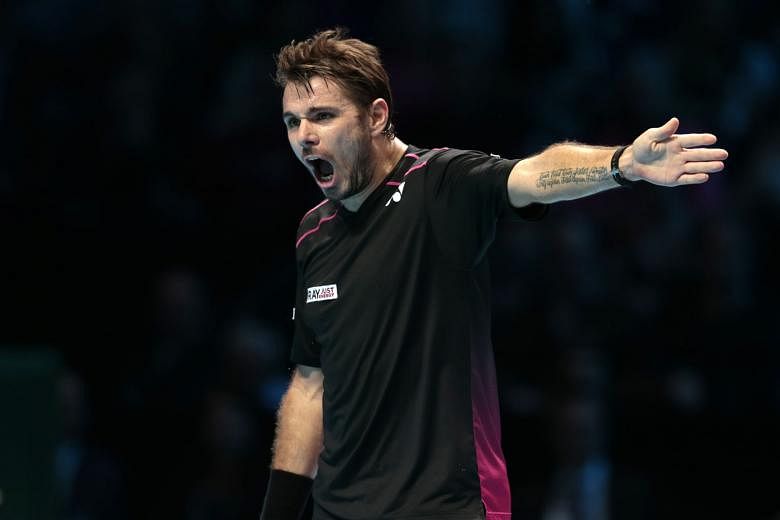CHENNAI (India) • Two years ago, Stan Wawrinka followed his triumph at the Chennai Open by beating Rafael Nadal in the Australian Open final three weeks later, his first Grand Slam title.
And in 2015, after winning in the Indian city, the Swiss defeated Novak Djokovic at Roland Garros to win the French Open in June.
With the first Grand Slam of the year beginning next week, he is hoping the "Chennai charm" will work in his favour again after he beat Croatian teenager Borna Coric 6-3, 7-5 to claim his third successive Chennai Open title on Sunday.
Eighth-seeded Coric, making his first appearance at the US$480,000 (S$692,000) tournament, said his opponent's "serve, backhand, forehand" got the better of him.
The 19-year-old would do well to take a leaf from Wawrinka's book.
The Swiss is now a two-time Grand Slam champion and one of only two players (Andy Roddick is the other) to have at least three wins on tour against each of the "big four" of Novak Djokovic, Roger Federer, Rafael Nadal and Andy Murray.
-
Road to Melbourne
-
Novak Djokovic, world No. 1
Although the new year is only 11 days and one tournament week old, it already seems clear that Djokovic is as dominant as he was in 2015.
He did not drop a set in winning the Qatar ExxonMobil Open in Doha and is the runaway favourite to retain the Australian Open title. - Andy Murray, No. 2
The choice of playing an exhibition tournament such as the Hopman Cup rather than getting down to serious work on the ATP World Tour is a dubious one.
Murray decided to combine some match play with serious physical preparation time and the loss to Australian Nick Kyrgios should not be taken too seriously.
Roger Federer, No. 3Considering Federer was reportedly battling an influenza virus for much of the week, he did well to reach the Brisbane International final before coming up short against Milos Raonic.
He will be fully recovered in time for the Australian Open and intent on purging the memory of last year's third-round exit.
Stan Wawrinka, No. 4Winning the Chennai title was the perfect Australian Open preparation for Wawrinka two years ago, and it could easily be the case again this year.
He has now won the Indian calendar opener four times and although he did not beat anyone close to the top 10, his confidence will be high.
THE TIMES, LONDON
"I had lost a lot of matches in my career," Wawrinka says from his hotel in Chennai.
"But I came to a deep realisation. Losing is a part of life. Nobody wins all the time. The question, then, is how do you react to defeat?
"Do you become demotivated and defensive? Or do you learn from it?
"A defeat is a huge opportunity to figure out how to become a better player.
"It is an opportunity to analyse. Instead of taking it badly, you can find new things to practise and better ways to adapt."
Perhaps this thinking and mindset explain why he is so keen to practise with the "big four".
"When you practise against players who are better than you, it means that you are constantly pushed. You have to find new solutions," he says.
"I practise with the 'big four' as much as possible. I can accept that I will probably never become a better player than them, but, by playing with them as often as possible, I can close the gap.
"I practised with Roger from a young age and I was like a sponge. We would talk about tactics. It was great, in many ways, to have him as a countryman. It meant that I could develop in his shadow."
For many tennis fans, Wawrinka's most celebrated attribute is his powerful (and aesthetically compelling) single-handed backhand.
How did he develop what is perhaps the most destructive groundstroke in the game?
"I had a two-handed backhand until 11 years old, but my first coach got me to change," he says.
"I was a big fan of (Pete) Sampras, (Alex) Corretja and (Patrick) Rafter, and they had wonderful one-handed shots. I didn't exactly try to copy them, but I practised very hard to develop it.
"A lot of people assume that the power comes from the arm, but it is mainly from the legs and back. That is how you gain the strength and the accuracy."
THE TIMES, LONDON, AGENCE FRANCE-PRESSE

